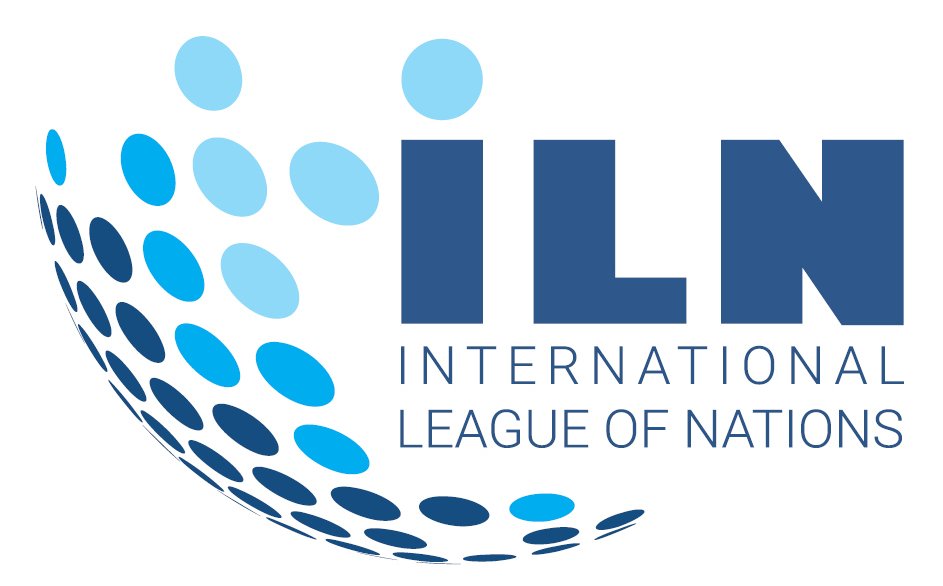While Americans argued over a list that doesn’t exist, Congress passed a bill that breaks Trump’s core promises.
As Americans sat glued to endless breaking-news banners about Epstein’s “client list,” something else happened — something far more impactful, and far more quietly: Congress passed, and President Trump signed a $3.3 trillion budget bill that fundamentally reshapes the economy, the welfare state, and America’s debt outlook.
What makes this especially alarming is not just the content of the bill, but the timing and coordination of its passage alongside the overhyped Epstein revelations — a spectacle that, in the end, delivered no new names, no arrests, and no accountability.
The Epstein media frenzy was, knowingly or not, the perfect political smokescreen.
Epstein Timeline: Media Hype, Political Manoeuvring
Let’s begin with the carefully laid media and political groundwork:
| Date | Event |
| June 5, 2025 | Elon Musk publicly claims Trump’s name is in unreleased Epstein files. Sparks political and media firestorm. |
| June 2025 | Bipartisan pressure mounts: Democrats and some Republicans demand DOJ release files. |
| June–early July | DOJ and FBI delay release, citing privacy concerns and child exploitation evidence. |
| July 1, 2025 | Epstein files partially unsealed. No client list. No new elite names. |
| July 7, 2025 | DOJ memo confirms no blackmail network, no “high-profile” indictments, Epstein death ruled suicide. |
| July 8, 2025 | MAGA influencers, Alex Jones, and others cry “cover-up.” Distraction intensifies. |
| July 9, 2025 | Trump holds meeting with AG Pam Bondi, FBI Director Kash Patel, and Dan Bongino. DOJ defends itself. |
For nearly five weeks, the media and online discourse were dominated by speculation about Epstein files — even as officials openly admitted there would be no “client list” or smoking gun.
Meanwhile, a Historic Budget Bill Quietly Passed
Now compare that timeline to the timeline of the One Big Beautiful Bill (OBBB):
| Date | Budget Event |
| July 1, 2025 | Senate passes Trump’s $3.3 trillion budget bill (51–50, VP Vance breaks tie). |
| July 3, 2025 | House passes the bill by a narrow 218–214 vote. |
| July 4, 2025 | President Trump signs the bill into law at White House Independence Day picnic. |
| July 6–10, 2025 | Major media largely silent. Focus stays on Epstein “fallout.” Only niche outlets issue warnings. |
This budget didn’t just make headlines — it should have dominated them. Here’s why:
What the Bill Adds
1. Permanent Extension of the 2017 Trump Tax Cuts
- While sold as a benefit for “everyone,” this extension primarily benefits the top 20% of earners.
- According to the Congressional Budget Office and Tax Policy Centre, the top 1% will receive more than 40% of the tax cut’s total value.
- Corporations keep their 21% tax rate, which was slashed from 35% in 2017, permanently.
- The middle class sees modest short-term savings—often offset by rising healthcare and housing costs.
Bottom line: This locks in decade-long tax breaks for corporations and the wealthy, while offering crumbs to working families.
2. New Tax Shelters for the Wealthy
- “Trump Accounts” for Children: Untaxed education/savings accounts pitched as a helping hand for families — but families making under $100,000 are unlikely to use them. 90% of the benefit will go to families earning over $250,000, per Wharton estimates.
- Expanded SALT Deduction Cap: Raises the cap on state and local tax deductions — disproportionately helping homeowners in high-income ZIP codes.
- Vehicle Interest Write-Offs: New deduction for interest on car loans — again, more valuable to those with higher-end financed vehicles.
Bottom line: These aren’t “reliefs for everyday Americans” — they’re tax shelters for the elite, dressed up as populism.
3. $150 Billion Defence Spending Increase
- Largest Pentagon boost in nearly 20 years — with funds earmarked for:
- AI-based weapons systems
- Private cybersecurity contractors
- Defence grants to allied nations
- No accountability reforms.
- Provisions to expand federal surveillance capabilities, including cross-agency intelligence sharing with domestic law enforcement.
Bottom line: While schools and hospitals get cut, the military-industrial complex is supercharged — without oversight.
4. $175 Billion for Immigration Enforcement
- Funds include:
- Expansion of private detention centres
- Development of AI-enhanced border monitoring systems
- Increased personnel and drone surveillance
- No funding for a wall, no pathway reform, and no DACA protections.
Bottom line: Despite Trump’s repeated promises to “fix the system,” the bill throws money at enforcement without actual immigration reform — just more surveillance and detention contracts.
What the Bill Cuts
1. Over $1 Trillion Slashed from Medicaid & SNAP
- Over 10 years, the bill reduces eligibility, imposes work requirements, and limits federal cost-sharing for state Medicaid programs.
- SNAP (food stamps) recipients face tightened income verification rules and benefit limits.
- The CBO estimates this will result in up to 12 million Americans losing Medicaid access and millions more experiencing food insecurity.
Bottom line: While billionaires get tax-free savings accounts for their kids, single moms and working poor families lose food and health support.
2. Cuts to Clean Energy Incentives
- The bill removes or scales back:
- EV purchase credits
- Residential solar rebates
- Energy-efficient building credits
- But it preserves ethanol subsidies (popular in Midwest GOP districts) and some corporate incentives for carbon capture — revealing a lobbyist-influenced compromise.
🔍 Bottom line: This isn’t a full repeal of the “Green New Deal” — it’s a selective rollback that benefits fossil-aligned industries while hurting consumers trying to go green.
3. No Meaningful Cuts to Federal Bureaucracy
- Despite campaign rhetoric about “draining the swamp,” the bill:
- Leaves the DOJ, FBI, IRS, and DHS budgets intact
- Adds defence-related jobs in DC and private-sector contracting
- Contains no civil service reforms or downsizing efforts
🔍 Bottom line: Trump’s base expected a purge of the “deep state.” Instead, they got a bigger state — just with different priorities.
Broken Promises to Trump’s Base
The “One Big Beautiful Bill” (OBBB) reads like a blueprint of betrayal for millions of Americans who supported Trump because of his clear, bold campaign promises. Instead of delivering on those pledges, the bill does the opposite in key areas that matter most to Trump’s core voters.
1. “Protect Medicaid & Medicare”
Campaign Promise: Trump repeatedly promised to protect healthcare programs for seniors, low-income families, and veterans. He portrayed himself as a defender of these vital safety nets.
Reality in OBBB:
- The bill cuts over $1 trillion from Medicaid over the next decade, mostly by tightening eligibility and imposing work requirements that many vulnerable Americans cannot meet.
- These cuts threaten the health coverage of up to 12 million low-income Americans, including children, disabled adults, and seniors.
- Medicare itself is largely untouched for now, but the ballooning debt raises serious concerns about future cuts or benefit reductions.
Impact: This is a devastating blow for working-class families and retirees who depend on these programs — a stark reversal of Trump’s “protect your healthcare” pledge.
2. “Eliminate debt in 8 years”
Campaign Promise: Trump famously vowed to wipe out the national debt during his first term and criticized previous administrations for reckless spending.
Reality in OBBB:
- The bill adds between $3.3 trillion and $5.5 trillion to the national deficit over the next decade, according to the Congressional Budget Office.
- The U.S. debt-to-GDP ratio will climb to historic highs, exceeding 125% by 2034.
- Interest payments on the debt, already over $1 trillion annually, will increase, crowding out future spending on schools, infrastructure, and even defence.
Impact: Instead of fiscal responsibility, the bill locks America into a massive debt spiral, putting future generations at risk and forcing painful austerity measures down the road.
3. “Drain the swamp”
Campaign Promise: A central theme of Trump’s campaigns has been to “drain the swamp” — cut bureaucracy, reduce federal agency size, and rid government of wasteful deep-state actors.
Reality in OBBB:
- The bill does not cut major federal agencies like the DOJ, FBI, IRS, or DHS. Their budgets remain flat or even increase slightly.
- Military and intelligence spending are expanded by $150 billion, funding new surveillance programs and defence contractors.
- No serious reforms to civil service protections or agency oversight were included.
Impact: Instead of shrinking government, the bill expands the size and power of the federal bureaucracy in areas like surveillance and military spending — betraying the anti-establishment hopes of many Trump supporters.
4. “End green energy tyranny”
Campaign Promise: Trump positioned himself as a defender of coal miners, oil workers, and fossil fuel interests, pledging to roll back “Green New Deal” policies and end what he called “woke ESG mandates.”
Reality in OBBB:
- The bill rolls back some consumer-level clean energy incentives (like EV tax credits and home solar rebates), but leaves many corporate ESG and renewable energy subsidies intact.
- Ethanol subsidies and other fossil fuel-friendly measures remain, revealing a political compromise to keep support from certain red-state industries.
- Many green energy provisions remain in place, showing the influence of lobbyists and the complexity of unwinding decades of energy policy.
Impact: Rather than an all-out rollback, the bill is a mixed bag, frustrating coal miners and climate sceptics while continuing to funnel billions to renewable and “green” industries — betraying promises to fully end green energy mandates.
5. “Help working Americans”
Campaign Promise: Trump campaigned on raising wages, cutting taxes for middle-class families, and protecting American jobs from unfair trade.
Reality in OBBB:
- The bill creates new tax shelters and savings accounts (“Trump Accounts”) primarily benefiting wealthy families, not working-class Americans.
- Permanent tax cuts overwhelmingly favour the top 1%, while working families get modest or no relief.
- Cuts to Medicaid and SNAP (food stamps) mean many low-income families lose vital assistance.
- No new protections or trade reforms to safeguard blue-collar jobs.
Impact: The bill exacerbates income inequality and leaves many of Trump’s base struggling to pay bills, undermining his promise to fight for the working class.
6. “Fix immigration”
Campaign Promise: Trump repeatedly vowed to build the wall, deport illegal immigrants “humanely but firmly,” and overhaul immigration policy.
Reality in OBBB:
- The bill allocates $175 billion for immigration enforcement, including AI-powered surveillance systems and expanded funding for private detention centres.
- No funding for the border wall is included.
- No pathway to citizenship or reforms for Dreamers (DACA recipients).
- The enforcement focus is on surveillance and detention, not meaningful reform or humanitarian solutions.
Impact: The bill intensifies border militarization and surveillance, but offers no real fix to immigration system dysfunction — breaking Trump’s promises for practical immigration solutions.
Summary
| Campaign Promise | What the Bill Does | Why It Matters |
| Protect Medicaid & Medicare | Cuts $1+ trillion from Medicaid | Millions lose health care |
| Eliminate debt in 8 years | Adds trillions to deficit | Future austerity looming |
| Drain the swamp | Maintains and expands bureaucracy | No anti-establishment reform |
| End green energy tyranny | Keeps many ESG subsidies | Compromise disappoints coal/oil workers |
| Help working Americans | Tax breaks for wealthy; cuts to social aid | Worsens inequality |
| Fix immigration | Funds enforcement, no reform | More surveillance, no solutions |
The Takeaway
Millions of Americans trusted Trump to deliver real change: secure their healthcare, reduce debt, shrink government, protect jobs, and reform immigration. Instead, the “One Big Beautiful Bill” signed during the Epstein media frenzy does the opposite, rewarding elites and punishing the vulnerable.
This bill is a clear betrayal of the promises that won Trump his base, and a reminder to all voters to look beyond campaign slogans and focus on what gets signed into law.
The Sleight of Hand: A Manufactured Distraction?
Whether coordinated by design or just exploited opportunistically, the Epstein saga became the most effective distraction of the decade.
- Pro-Trump voices: Deflected blame by claiming the Epstein files were a “Biden DOJ cover-up.”
- Anti-Trump media: Ran endless Epstein headlines to subtly tie Trump to child trafficking — even though no legal evidence emerged.
- Everyone else: Missed the biggest wealth transfer in years.
The public was told to be angry, but not about the thing that actually changed their lives.
The Fallout Americans Will Soon Feel
- Healthcare: Up to 12 million will lose coverage. ER costs and state budgets will spike.
- Debt servicing: Over $1 trillion/year already goes to interest — now forecast to rise further.
- Future cuts: Social Security and Medicare may be next on the chopping block — because there’s nothing left to slash.
Yet when Americans feel the pinch, many won’t connect it to this bill, because the headlines told them it was all about Epstein.
Final Word: Betrayed by Distraction
This wasn’t just bad timing. It was a case of:
“Look over here at the scandal…”
“…while we rob you blind.”
The Epstein distraction — empty as it turned out — allowed elites to pass a law that quietly:
- Rewards the rich,
- Punishes the working class,
- Breaks promises,
- And sets the stage for future austerity.
For Trump’s base — the forgotten Americans — this should be a wake-up call.
You were used. Again.
If you’re serious about draining the swamp, protecting your family, and fixing America — then start paying attention to what’s signed into law, not what they’re shouting about on TV.





